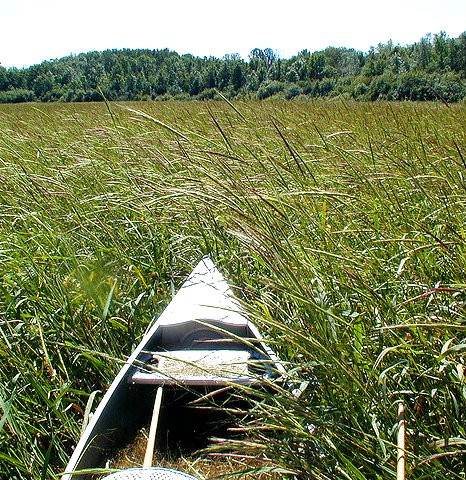The good grain: Restoring wild rice in the North

Ahead of me, stumbling down an embankment, a 16-year-old boy drags a 50-pound bag of recently harvested rice seed toward the river bank. He’s a volunteer and part of a wild rice restoration project organized by the local county juvenile court, the Keweenaw Bay Indian Community and the Great Lakes Indian Fish and Wildlife Commission. Our aim is to plant 2,100 pounds of wild rice seed (zizania palustris) at seven different sites across two rural counties in northern Michigan.
Once a treasured source of nourishment and sacred meaning for Native Americans of the upper Midwest, natural stands of wild rice (manoomin in the Anishinaabe language) are diminishing because of the loss of wetlands and the dominance of more profitable commercial growers in California. Though wild rice glimmers with trendy back-to-nature appeal—and, to the chagrin of many Native American communities, wild rice packages are often marketed with an American Indian insignia—90 percent of all wild rice is now grown in rice paddies in northern California. Only a small percentage is harvested by any business related to Native Americans.
Domestication of wild rice began in the 1950s. Corporations perceived the potential profit in this unique cereal grain, native only to the North America continent. Academic institutions provided research on improving production and developing new seed stock. The focus on efficiency in planting and harvesting was accompanied by rising environmental problems in the Midwest regions that are home to wild rice. Scott Herron, an ethnobotanist of Odawa lineage who directs the Wild Rice and Ethnobiology Lab at Michigan’s Ferris State University, notes that in the post–World War II years wetlands in the Midwest were drained and lakes dammed, and the widespread use of herbicides and pesticides often destroyed the delicate water conditions needed for wild rice production.





